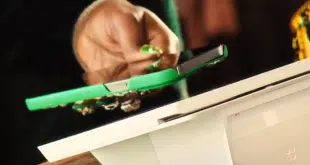Transaction volumes are rising on the automated clearing house, but a recently released survey shows a nasty side effect of this growth is a rise in the volume of disputed transactions. Some 63% of processors and financial institutions reported they handled more disputed, or unauthorized, payments last year than in 2008, according to eGistics Inc., a Dallas-based company that sponsored the survey.
Twenty-five percent of those that reported an increase said their disputed-transaction count was up between 5% and 10%, while 6.7% reported a rise between 11% and 20%. For the survey, which went out to about 1,600 organizations, eGistics defined a disputed transaction as a debit that was unauthorized, carried an amount that exceeded the authorized debit, or happened even though the account holder had revoked authorization. Randy Davis, vice president of sales and marketing operations for eGistics, says the survey garnered a response rate between 3% and 6%. EGistics specializes in software that automates the storage and management of business data, including dispute-resolution tools.
The rising load of busted transactions is attributable to higher overall ACH traffic and increasing consumer awareness of how ACH transactions work and how to dispute them, according to the survey. It is also imposing higher costs on financial institutions, respondents said, with 38.5% reporting increased operations costs stemming from managing the disputes.
For the thousands of financial institutions that handle ACH items, however, the picture is different. NACHA, the Herndon, Va.-based organization that regulates the ACH, reports that unauthorized debits networkwide peaked in 2008 at 3.68 million transactions following rules changes it put into effect to better control risk. These included a so-called company-name rule that took effect in June 2008 and required merchants using ACH debits to identify themselves on consumer bank statements with names their customers would recognize (Digital Transactions News, Feb. 12, 2008). Around the same time, NACHA also hiked penalties for unauthorized transactions. NACHA says its definition of unauthorized transactions aligns with the definition used by eGistics.
Partly as a result, the volume of disputed items across the ACH network fell 10% in 2009 from 2008, while in the first half of 2010, the volume was down 14% from the same period in 2009, according to NACHA.
Much of the cost of dealing with disputed transactions stems from the fact that the ACH, unlike the credit card networks, lacks a streamlined system for chargebacks, says Rossana Salaris, a principle at Oakdale, N.Y.-based Radix Consulting who helped interpret the results of the eGistics survey. Salaris until recently was an executive at The Clearing House Payments Co. LLC who ran the company’s Electronic Payments Network, one of two switches for the ACH.
For transactions under certain thresholds, she says, many account-holding banks will simply refund the money to consumers rather than try to investigate the dispute. “In most of the cases, it comes out of the pocket of the receiving institution,” she says. “If the amount isn’t significant enough, it will cost them more to investigate it. The aggregate of those writeoffs for some banks is significant.”





